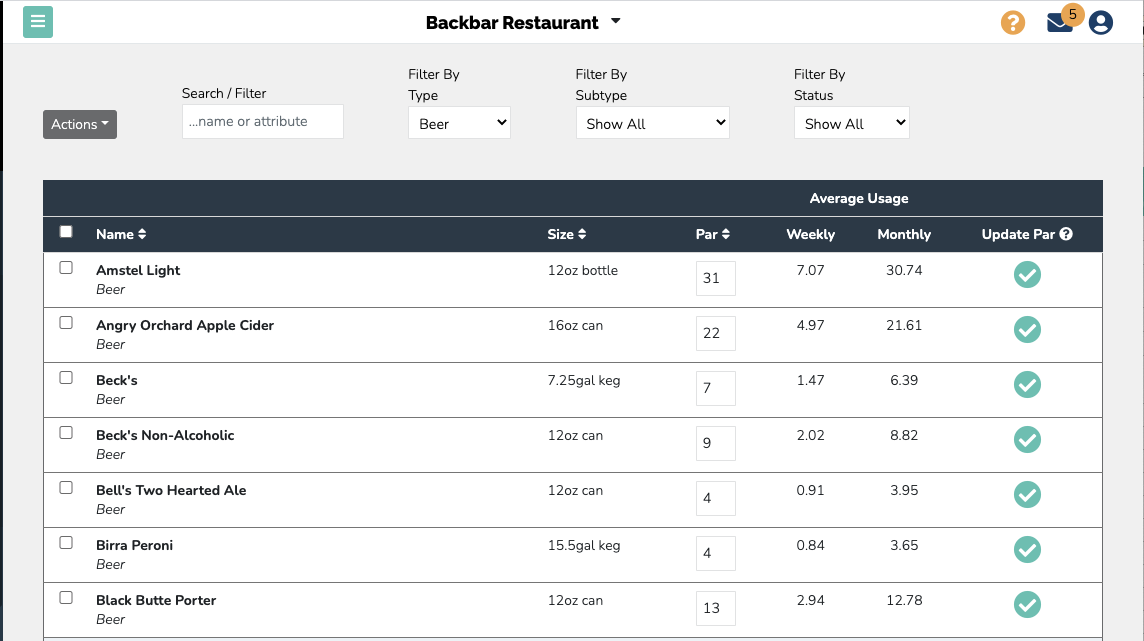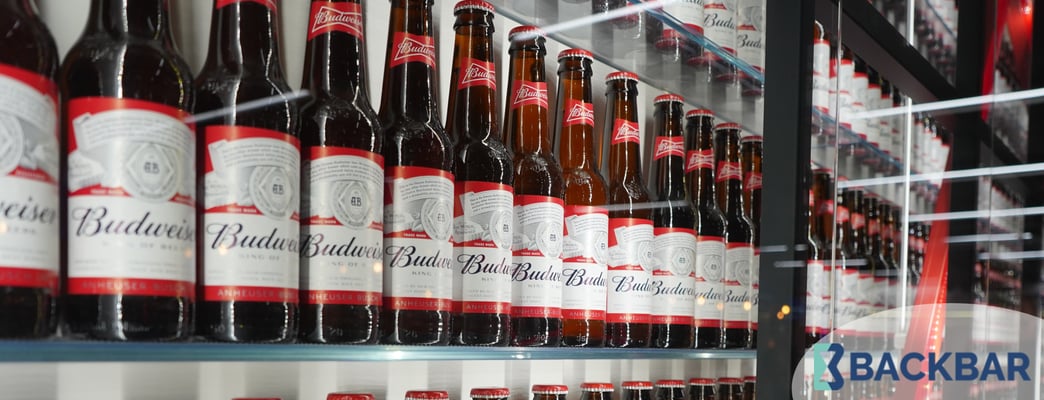When a restaurant or bar has excess inventory, it causes food and liquor costs to balloon and reduces profitability. Excess inventory, or overstock, can pile up when you purchase too much product or when inventory sells too slowly. While having buffer inventory on hand, sometimes referred to as safety stock, is great for fast sellers, you don't want to be stuck with expiring beer bottles or cases of misfit wines. Let's go over how to reduce excess inventory so you can lower costs and improve inventory management.
How does Excess Inventory Happen?
Here are the top reasons that can cause a bar or restaurant to have undersold inventory:
- Careless Inventory Management - Without a clear or effective procedure for ordering and tracking stock it's no wonder you carelessly have excess inventory. Inventory management refers to keeping accurate track of all the food, liquor, misc. products, etc. inside your restaurant. When you're not tracking your inventory usage rates you're setting yourself up to over-order or miss-order and this will lead to having more product than you need.
This is why products like Backbar exist, to help make inventory management easy and effective so you don't lose hard-earned profit. Using the data that Backbar will automatically gather for you, you can then better track what you're selling and ordering and almost eliminate accumulating inventory you don't need.
In addition, keeping track of inventory turnover, or how often you sell out of inventory during any given time, will show you what your top and low-selling items are and add to making smarter ordering and inventory decisions.
- Inaccurate Ordering - When you don't utilize your past data or industry trends correctly this can cause you to make ordering decisions that you shouldn't. Simply purchasing the same quantities of specific items week after week isn't business smart. Every week is different, so each one is going to require a different order. You never want to be left with a surplus or a deficit because you chose to ignore the procedure.
Making your vendor orders based on past ordering data, seasonal needs, and customer ordering patterns are the smarter way to handle your ordering. Past orders or year-over-year data can all be stored in Backbar's system and then used to stay on budget.
- Menu Changes - Menu changes can cause you to have products you no longer need. It's smart to keep your menu relevant and on-season, but changes mean certain ingredients might be used in fewer menu items or potentially not at all. If you don't quickly use those ingredients they will likely go bad and become food waste, also known, and money down the train.
- Slow-Selling Stock - Unpopular product that is not being successfully upsold. Sometimes certain beers, cocktails, or menu items become unpopular or never really sell enough. It can happen within a restaurant easily and then that stock, specifically beer and other alcohol that have longer shelf lives, will just sit in your storage space without being sold.
A way to keep track of what is and isn't selling is by keeping accurate par levels. Your par level is the minimum amount of any given inventory item needed to meet the demand from your customers. This can also be called safety stock. When your inventory hits below your chosen par level that means it needs to be ordered. This level is set by you and can be adjusted to fit your needs.
This level is easy to view and change in the Backbar program.
- Unreliable Suppliers - Uncertainty in the deliveries can lead you to want to over-order, which is not wise in inventory management. If you can't trust your vendors then it might be time to search elsewhere or have a conversation with them to figure out how to change that behavior and better benefit you both.
Excess Inventory Formula
Excess inventory, which you can also refer to as excess value, is used as an efficiency indicator for money tied up in inventory.
To calculate excess inventory, we first must calculate each item's usage. The formula for usage is:
Starting Inventory + Quantity Purchased - Ending Inventory = Usage Quantity
Once we have your usage data for your products, you can calculate excess inventory. The app makes the assumption that you should have enough of a product on hand for a month. This is a generous assumption, as oftentimes you need much less, as you can re-order products from vendors or deal with fluctuations in sales.
Excess inventory = Current Inventory Value - Monthly Average Usage Value
Your current quantity on hand for each item subtracted by how much you typically use in a month equals the excess.
Backbar allows you to easily see your Excess Inventory value in your reports dashboard.
How to Reduce Excess Inventory
1. Update Your Marketing & Suggestive Selling
It's possible the product could have been slow-moving, not because people didn't want it, but because it needed to be sold in a different way. For liquor or beer try adding them to a new cocktail or training your staff to explain popular menu items it pairs perfectly with.
This is also a great time chance to utilize any social media presence you have. Promote deals on low-selling items or post photos of menu items that need more attention to add hype behind the product and hopefully move the inventory better. Have fun with them like this example:
2. Service Staff Incentives
Check-in with staff and communicate the need to move particular stock. Give them some ways they can get the customer interested in ordering it. You could even offer an incentive for the employee that sells the most.
During your pre-shift meetings, have floor managers tell the staff items the restaurant is trying to push to get rid of inventory. Give a quick but detailed explanation of the item. Things like ingredients, flavor profile, what it pairs with, etc. are great. Even consider having the staff quickly taste the item so it's fresh in their mind before they hit the floor.
Also, it's no secret that industry employees can be competitive. Offering a free meal, an additional "bonus" pay for the shift, or a "favor" from the manager to the employee who brings in most of the featured items will get the team motivated to help you sell any extra inventory fast.
3. Show Off The Product to Customers
Double-expose the product to have more of the inventory displayed in the store. This could be making it more front and center at the back bar or printing out marking material for it and sticking it in the menus or on each table.
You can utilize free programs like Canva to create aesthetically pleasing marketing material to show off certain menu items you're attempting to push. Add photos, taken by you or from free stock images, add your restaurant logo, and include fun and catchy wording to get guests interested in ordering.
4. Strategic Discounts
This technique involves more than just lowering the cost, it is about devising a plan for how to market the discount in a way that will yield more success. Create exciting sale events or happy hour menus for a certain amount of time. Also, apply discounts in increments. Start small and then cut the price more if the product is still not moving.
5. Find Other Uses
If you have ingredients that are going to expire soon or if you have ingredients for a menu item that it's selling as well or has been removed for whatever reason this is a chance to let your staff get creative. Adding a new drink or dish that utilizes them is a great way to use it. You can even use this as a new restaurant marketing strategy. Call them specials or limited-time offerings to increase demand and use up that excess stock.
6. Donate It
Any nonalcoholic items you have an excess of may be useful to a not-for-profit. Though you won't see an immediate return, donations have tax advantages for your business. Not to mention you'll build goodwill in your area.
According to the U.S. Department of Agriculture, "If businesses have an excess inventory of wholesome food, they can donate it to hunger relief organizations, such as food banks, food pantries, and community-based organizations, to help families in need... Donating food can also help businesses with their bottom line and divert food from being dumped in landfills, which in turn helps the environment."



